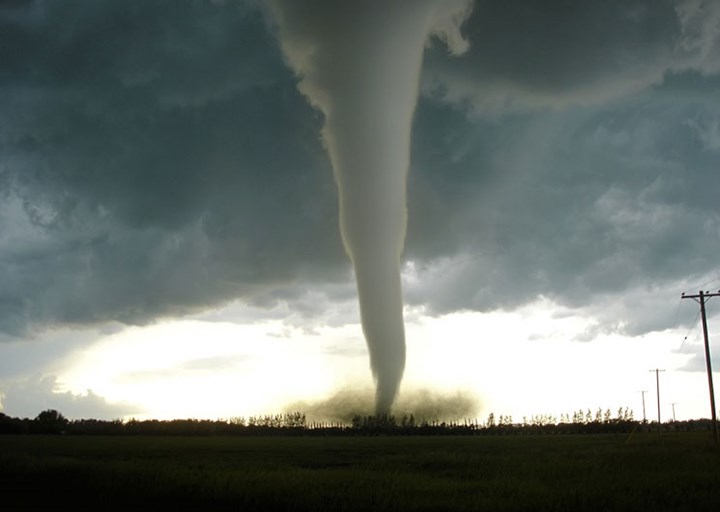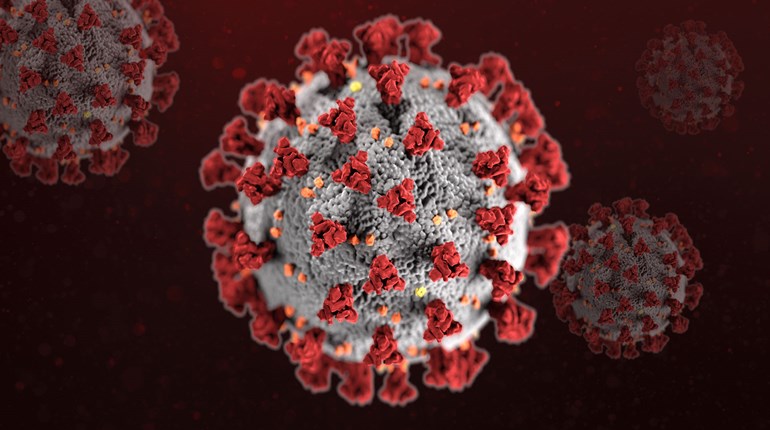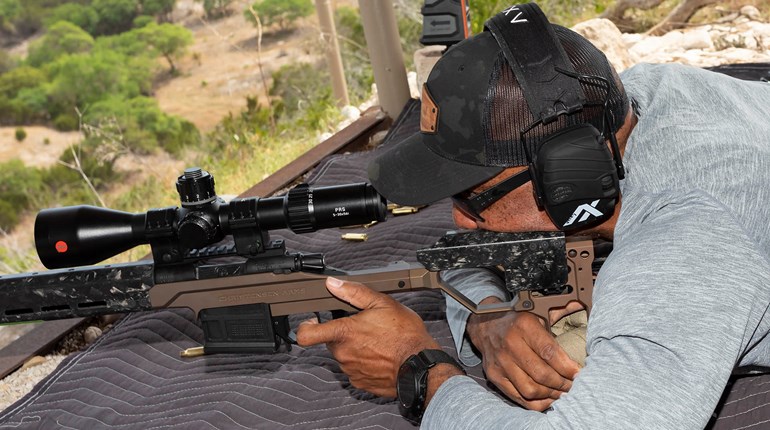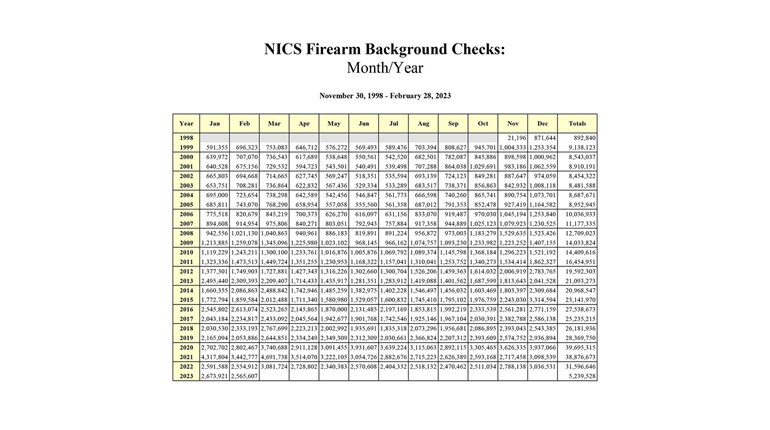
When a pair of men ventured into the Nevada desert in March 2012 to do some exploring, their vehicle became stuck. There was no cell-phone service, and after five days, the 75-year-old man set out in search of help. The 76-year-old diabetic who remained with the vehicle was rescued 10 days after the ordeal began. His friend's remains were recovered 1.5 miles from the vehicle.
Staying put to weather the storm or mayhem outside could offer the best chance at staying safe. There may be times when you have no choice but to shelter in place. Moving wasn't an option as Hurricane Sandy made its way up the East Coast in 2012, closing New York City's subways, bridges and mass transit, canceling 20,000 flights nationwide, and leaving 6 million people in 15 states and the District of Columbia without power for days after the onslaught.
Authorities can also issue shelter-in-place orders with some frightening stipulations. When an emergency was declared at a refinery in 2013, California residents nearby were told to stay inside, close all doors, windows and vents, tape or seal them, turn off all heating and cooling, and not to make any calls "unless it [was] a life-threatening emergency."
On April 19, 2013, citizens in and around Boston were put in a similar situation while authorities conducted house-to-house searches for the remaining suspect in the Boston Marathon bombing. In any of these cases and many more, having a plan to shelter in place is the essence of survival.
Within Reach
The aftermath of Hurricane Katrina and the incident in Boston are frightening reminders that self-defense should be a critical consideration in your survival planning. Criminals don't obey the law, much less shelter-in-place orders. Then there is this reality: Law enforcement may not have the resources to deal with a single home invasion—or to make it a priority—while another life-threatening situation affects thousands. And that's assuming your 911 call can even get through.
Having immediate access to firearms for protection is an obvious priority, but it takes careful planning. Family situations vary, so some may feel uncomfortable staging loaded guns around the house. But, you'll want the ability to get to a gun fast when the front door's hinges are being pounded out of the frame by a 300-pound gang member on a looting spree. Enroll your family in a quality firearm education course; it could pay huge dividends in an emergency situation.
If you do stage your firearms, there's no reason to further alarm frazzled neighbors who may also be sheltering in place. The guns don't need to be obvious, with the possible exception of your holstered sidearm where open carry is legal. That one they'd have to wrestle from you, but seemingly unguarded firearms placed in plain sight might invite trouble by appearing easy to steal.
Obviously, all firearm safety precautions still apply, regardless of the disorder outside. You'll have enough problems—don't add a negligent discharge to the list. Taking care of your firearms and ammunition will be another critical mission. Keep plenty of cleaning supplies on hand, because weather-related disasters may mandate daily maintenance. A stockpile of spare parts is also a good idea, as you won't be able to order them online. Think about waterproofing part of your ammo supply, as well.
The self-defense aspect of sheltering in place takes on added importance when potable water is the rarest of commodities, gas is in short supply and scrounging for food is a constant chore for those who haven't planned ahead. Criminals aren't your typical hunter/gatherer, and predators with hungry stomachs are always looking for an easy meal.
Generators eat gas and print your position, so I've opted for a portable solar-power system. The smell of Spam on the grill will also attract undue attention. A small backpacking stove is a better device for cooking.

When outside, turn on your flashlight only if absolutely necessary. Of course, this will extend battery life, but it may also extend yours. White light stands out like a flare and could summon uninvited guests.
Safe at Home
Earthquakes, tsunamis, hurricanes, tornadoes and meteors. Lions, tigers and bears, oh my! Thanks to an exotic zoo being loosed a few years ago, none of these are beyond the realm of possibility. Also consider solar flares and geomagnetic disturbances, like the one in 1921 that scientists estimate would damage 350 transformers and leave 130 million people in the dark today.
Some natural disasters can be predicted a few days ahead, others cannot. Any of them could mean spending an extended period confined to your home, possibly without electricity.
The next terrorist attack may be a faceless assault on our infrastructure that could lead to total chaos for months, leaving many people defenseless against criminals. It sounds like Hollywood fiction until you consider the May 21, 2013, report entitled "Electric Grid Vulnerability," issued by Congress.
"A five-year-old National Academy of Sciences report declassified and released in November of 2012 found that physical damage to large transformers could disrupt power to large regions of the country and could take months to repair," stated the congressional report's executive summary. "[The report also found] 'such an attack could be carried out by knowledgeable attackers with little risk of detection or interdiction.'"
How bad would it be? Congress' report notes that former Secretary of Defense Leon Panneta said a "cyber-attack perpetrated by nation states or extremist groups [could be] as destructive as the terrorist attack on 9/11."

Other chilling facts in the paper include the domino effect caused by an August 2003 incident where sagging power lines in Ohio coupled with a computer error left 50 million people without power for two days—the largest blackout in U.S. history. One utility company claims in the report it is under constant cyber-attack by malware and probes, and another says it fights off 10,000 such attacks per month if you include phishing efforts by hackers.
Clearly, being without power for an extended amount of time is entirely within the realm of possibility. Staying put during an outage and the social unrest that may follow could be the best way to deal with the situation, but only if you are properly prepared.
The Federal Emergency Management Agency (FEMA) recommends keeping the following in the house for natural disasters and other times when you do not have electricity:
• Three gallons of water, per person (a three-day supply)
• Three-day supply of non-perishable food
• Battery-powered or hand-crank radio with National Oceanic and Atmospheric Administration reception capabilities
• Flashlight
• First-aid kit
• Whistle for signaling
• Dust masks
• Duct tape (to seal windows and doors)
• Tools (in particular, those needed to shut off utilities)
• Manual can opener
• Local maps
• Cell phone with a car charger or inverter
The organization also has some excellent tips on storing your survival gear and properly shelving common household items to minimize the potential for dangerous spills during a natural disaster. Its website at ready.gov has more details.
FEMA's list is a good start, but you may want to make some very simple additions. If the power goes out, your cordless phone is useless, yet the telephone lines may still be working. Hang on to one of those old phones that plugs directly into the jack. It's saved my bacon a couple of times when the nearby cell tower was down.
Add a backpacking-style, water-filtration system. A three-day supply of water may leave you thirsty should it become contaminated, which is a pretty common occurrence during flooding. When your water runs out, you'll have a way to get more. These filters are small enough to take with you if you have to bug out, too.
Will you be able to cook? I once spent 10 days in a sparsely populated neighborhood without power and gas, thanks to a freak snowstorm that left about 60 of us stranded in our darkened homes. Our answer was simple: We fired up the barbecue grills.
Well, the neighbors did—I didn't, because I have an MSR WhisperLite, which is a multi-fuel backpacking stove. It's compact, and if things get really bad it runs on white gas, kerosene or unleaded gasoline. Camp stoves are much heavier, but when sheltering in place, they are nearly as versatile as my little bug-out buddy.
Paper plates save water and effort, so keep some around. Have two propane tanks for your barbecue, one that you use and another that remains completely filled for an emergency. Spare gas for your portable stove or heater doesn't go bad. Spam comes with its own opener and has a half-life that rivals strontium (not really, but it's longer than about anything else you can store). If you desire variety, MREs or freeze-dried meals may be a better choice—as long as you have potable water and can heat it.
Blankets and clothes may not be sufficient if you need to stay warm. Household backup heating, like a fireplace or wood burner, is the best solution. Annually make sure any type of wood-burning stove or fireplace is in good shape, and its vent pipe or chimney is clear.
Regularly refamiliarize yourself with its function; an emergency is not the time to experiment. Keep a couple days worth of wood for the fireplace in the house to give anything you pick up outside plenty of time to dry indoors. Camping-style heaters are also a viable option.
Household contents can get soaked, so ensure you have matches that survive by placing some in a waterproof container, along with a striking surface, and store it in a location different from your primary fire-starting means.
If the problem is keeping cool, stay out of the sun. Limit outside activity to the night or during the twilight hours. Wear long-sleeved shirts and full-length pants.
Some natural disasters give advanced warning of their arrival. In such cases, charge your cell phone and fill the bathtubs with water. If you've been smart, you've been saving and cleaning 2-liter soda bottles. Fill them with fresh water (leave some room at the top for the water to expand) and toss them into every nook and cranny you can find in your freezer.
They will keep things a little colder if the power is out for a few days, and they provide another source of potable water. Try to keep your vehicle's gas tank nearly full—it helps provide traction in the winter and also power to recharge phones and gear with an inverter.
Get some first-aid training—first responders probably won't be coming anytime soon. Since it could take weeks or even months to enroll in and complete a course, make this a priority.

On the Road
There are some situations where sheltering in your vehicle may be the best or only option. The tragedy in Nevada that claimed the life of the 75-year-old is a good example. A natural disaster that takes out a road may force you to spend days living in your car if you're en route when it happens. Even a snowstorm could leave you stranded in your vehicle.
A panic-stricken mass exodus from a major city is another possibility that will literally clog highways with accidents, arguments and potentially dangerous confrontations. Do you risk your vehicle in that case and start making tracks on foot, or deal with the situation wherever you are?
I always carry the following essentials in my truck that make the latter a viable option:
• Wilson Combat CQB Elite 1911 (in an inside-the-waistband holster)
• Two spare, loaded magazines
• A flashlight; my standby is a SureFire L1 Digital LumaMax
• Sturdy, fixed-blade knife
• Adventure Medical Kits Outfitter bag
• Matches
• Multi-tool
• Road flares (can also be used to start a fire)
• Signal mirror (the shiny side of a CD will do in a pinch)
• Oil, folding shovel, jumper cables and water for the radiator (your car will run on water, but you can't drink anti-freeze)
• Headlamp
• Pants, shirt, long underwear, socks, gloves and wool hat
• Two quarts of drinking water
Your environment and even local laws may preclude some of these items, and there may be others you should add given your unique circumstances. Vary the items by season (a sleeping bag is always a regular item in my truck during the winter). The key is to make sheltering in your vehicle or nearby so practical, you're not afraid to do so if necessary.
The possibilities are limitless, and unfortunately, doling out advice on sheltering in place during an unthinkable scenario is a lot like playing armchair quarterback. Although the basic needs remain the same, the situation will be vastly different depending on where you live. Downtown dwellers will have distinct challenges compared with those living in suburbia or rural areas.
Consider your circumstances and weigh all of your options before a dangerous emergency arrives. You don't have to build a bunker, but you should continue to work on your self-defense skills and accumulate supplies that do double duty—just in case survival ever depends on your ability to adapt and overcome while staying put.
Steps for RESCUE
No matter if you're stuck in your vehicle, lost in the wilderness or weathering the storm at home, rest assured other people have been in this situation and survived. You can only make things worse if you panic. Instead, follow these six steps.
R— Relax. You're still alive.
E— Eliminate any negative thoughts. You can and will make it through this. Your mind can be your most powerful ally or enemy. Keep it on your side.
S— Sit down, and inventory your situation and resources.
C— Choose your actions in a calculated manner and with a cool head.
U— Utilize everything and anything at your disposal.
E— Economize your resources. There's a big difference between economizing and rationing. Don't waste any food, water or energy—electric or your own.
FEMA also advises you add these steps if you're obeying a shelter-in-place order:
1. Maintain a 24-hour safety watch. Two-legged predators are one concern, but so is a sliding-glass door that buckles under the pressure of a tsunami.
2. Monitor the radio for updates on the situation or to determine if the shelter-in-place order has been rescinded. That doesn't mean to leave the radio on 24/7. Conserve that battery.
3. Stay in place until authorities advise it is safe to leave, and don't assume only law enforcement will be pounding on your door at a time like this.Although FEMA doesn't include this advice, keep your bug-out bags packed and next to the door. A fire, gas leak, rising water or home invasion may force you to leave. Keep your options open.





































